The ideal ski season for the dedicated enthusiast is a pilgrimage, defined by vertical drop, deep powder, and the silence of remote, earned turns. This travel guide bypasses crowded resorts to spotlight 5 exceptional destinations that demand skill and deliver life-altering descents. These locations represent the zenith of global snow sports and the untamed spirit of ski mountaineering and freeride. Each offers a unique combination of challenging terrain, unparalleled snow conditions, and compelling culture. Prepare to trade predictability for the raw, exhilarating freedom of the high mountains. So, let the adventure begin!
From arctic fjords to volcanic glades: which untamed peak will define your winter legacy?
The Lyngen Alps & Svalbard, Norway
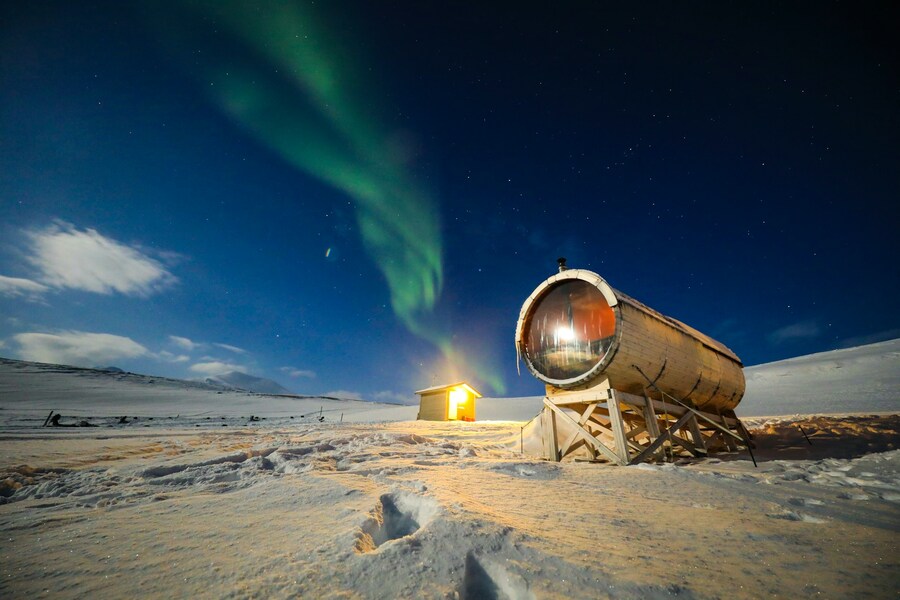
Source: Dylan Shaw/Unsplash
To ski Norway's Arctic perimeter is to step into a realm dominated by geological extremes, where mountains plunge directly into the sea. The Lyngen Alps, a jagged spine of peaks north of the Arctic Circle, are the undisputed capital of the country's ski-touring scene. This is where the concept of "ski and sail" was perfected, utilizing small expedition vessels to ferry skiers between fjords, granting access to slopes otherwise unreachable. The ascent often begins at the water's edge, providing continuous vertical drops of 1,000 to 1,500 meters down open faces and steep couloirs, culminating in a descent right back to the boat deck for a celebratory hot drink. The unique lighting, from the long, blue twilight of late winter to the surreal glow of the Midnight Sun in late spring, defines the aesthetic of the experience.
Further north, the archipelago of Svalbard represents the ultimate in frontier skiing. While requiring specialized logistics, often including bear awareness protocols and highly experienced guiding due to the remote, glacial environment, the reward is an otherworldly experience. Skiing here happens against a backdrop of sweeping tundra, icebergs, and, during the early part of the season, the flickering majesty of the Aurora Borealis. The snowpack in both regions is maritime, meaning it's influenced by the Arctic Ocean, offering reliable cover, though it often requires advanced knowledge of wind-loading and snow stability. The best window for maximizing daylight and stable snow tends to be from late February through April. Travel typically involves flying into Tromsø (for Lyngen) or Longyearbyen (for Svalbard), with subsequent ground or boat transfers essential for reaching the prime touring areas. The complexity of navigating this environment necessitates reliable support and meticulously planned ground logistics.
Hokkaido, Japan
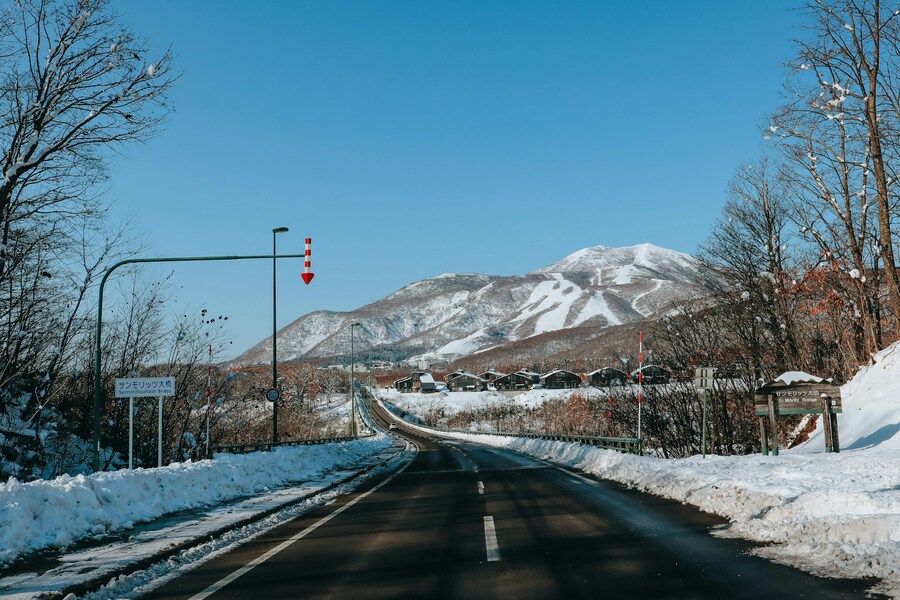
Source: Asmut Dante/Unsplash
Hokkaido, the northern island of Japan, is universally revered by powder hounds for one simple, consistent phenomenon: JaPow. This is not just deep snow; it's famously the driest, lightest, and most reliable powder on Earth, delivered by Siberian storm systems crossing the Sea of Japan. The immense annual snowfall, often exceeding 15 meters in favored spots like Niseko, Rusutsu, and Furano, creates a landscape of perpetual deep winter. The skiing here is defined by deep tree runs through ethereal birch forests, known as Jukai or 'Sea of Trees,' which hold the feather-light powder exceptionally well, even days after a storm.
While Niseko is the most recognized spot, offering robust lift access to backcountry gates around Mount Annupuri, the true adventure lies in exploring the volcanic peaks like Mount Yotei, a perfect conical stratovolcano, or the more remote lines near Asahidake. These tours blend substantial vertical descents with a unique cultural immersion. After earning turns in neck-deep snow, the Japanese ritual of onsen – communal hot spring bathing – provides the perfect physical recovery and spiritual contrast to the intense mountain day. The infrastructure is modern, centered around Sapporo's New Chitose Airport (CTS), and transport via high-speed trains or local buses is highly efficient. The season peaks dramatically from January through February, offering the purest and deepest snow conditions, though the consistent storms often continue well into March. Hokkaido is accessible to a broader range of abilities than some other locations on this list, offering mellow, powder-filled glades for intermediates alongside serious steeps for experts, all while guaranteeing an authentic, respectful engagement with the local customs.
Chamonix & La Grave, France
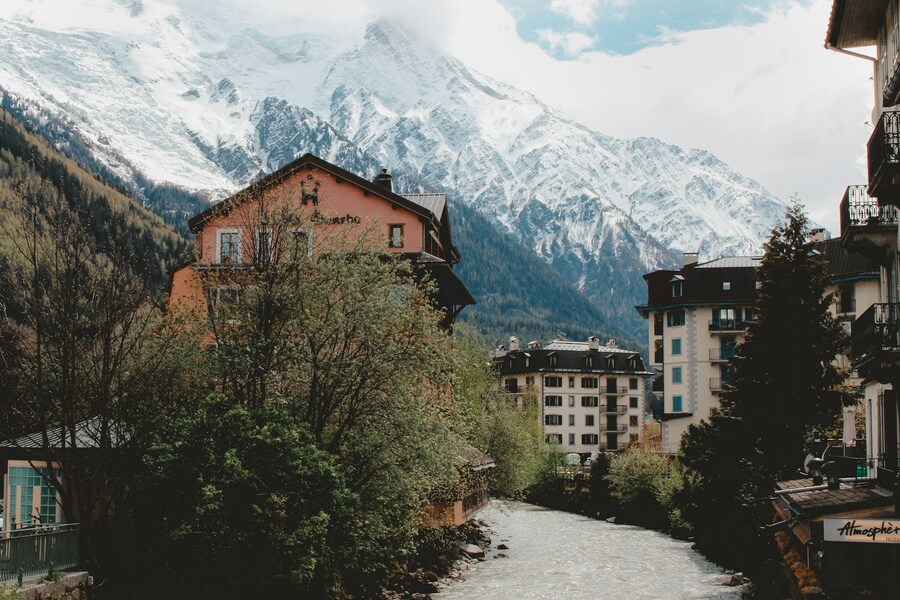
Source: Patrick Boucher/Unsplash
Chamonix, nestled beneath the colossal granite mass of Mont Blanc, isn't merely a ski resort; it's widely regarded as the historical cradle of alpinism and serious off-piste skiing. The valley is the ultimate proving ground for the technically proficient skier. While it possesses world-class lift infrastructure, including the Aiguille du Midi cable car that rockets riders to 3,842 meters, the terrain accessed is relentlessly high-alpine, glaciated, and intimidatingly steep. Runs here aren't groomed or marked, and even the famed 20-kilometer Vallée Blanche descent, while breathtaking, requires glacier travel knowledge, ropes, and a guide to safely navigate crevasses and serac fall zones.
A short distance away, La Grave, home to the telepherique (cable car) that services La Meije, represents the purest form of lift-accessed off-piste skiing anywhere. There's only one lift, one marked descent, and zero piste patrol. The terrain – a chaotic maze of couloirs, steep bowls, and high exposure – is completely uncontrolled and unmarked. It's a place where every run is effectively backcountry, demanding fitness, route-finding skills, and absolute mastery of mountain conditions. The reward is 1,800 meters of continuous, unadulterated vertical fall line.
Logistically, accessing the European Alps is straightforward, typically involving a flight into Geneva (GVA) for Chamonix or Grenoble (GNB) for La Grave, followed by a relatively short drive. For those making the journey from afar, particularly those who prefer to drive themselves to the departure city airport, securing reliable long-term ground arrangements is often the first logistical hurdle. Investigating international airport car parking options well in advance of the travel date is a highly recommended practice, particularly when seeking optimal pricing. Services, such as ParkingNearAirports.io, offer a useful platform for pre-booking, aggregating competitive rates and detailing various parking discounts available for extended stays. It's always prudent to compare the varying airport parking charges per day across different service tiers – from self-park to valet – to ensure that the travel budget is optimized before committing funds to the trip itself. The best time to visit Chamonix and La Grave is generally February and March, when snow depths are maximized and the weather tends toward greater stability.
Svaneti, Georgia
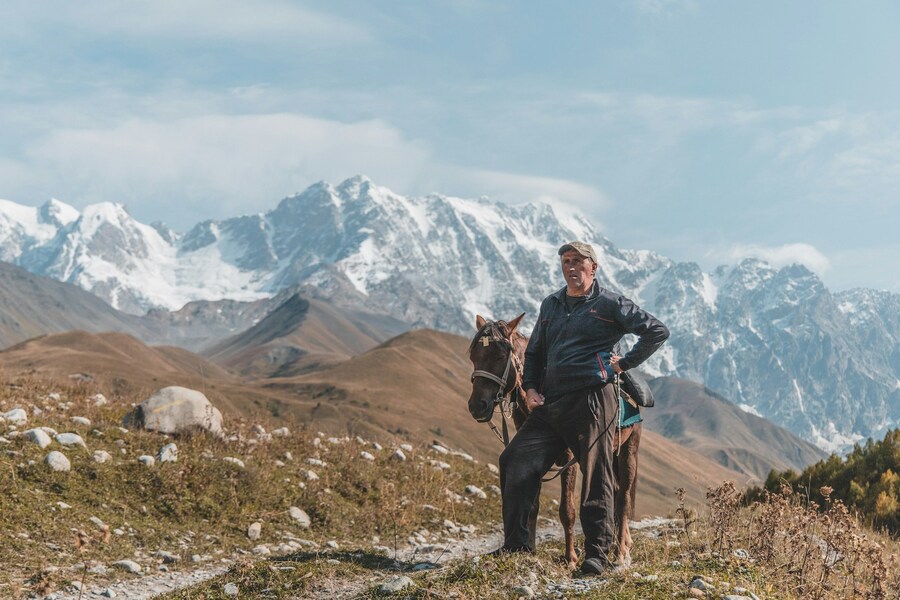
Source: Tomáš Malík/Unsplash
Svaneti, hidden deep within the Greater Caucasus Mountains of the Republic of Georgia, offers a profound juxtaposition of ancient culture and thrilling, unexplored ski potential. For the adventurous skier seeking a true hidden gem, Georgia represents the new frontier of European snow sports – budget-friendly, rich in tradition, and boasting genuinely untracked terrain. The region centers around the villages of Mestia and Ushguli, the latter being a UNESCO World Heritage site famous for its medieval stone defense towers, which stand sentinel against a backdrop of towering, glaciated peaks like Shkhara and Ushba.
While the infrastructure is rapidly developing, most notably with the lift-served resort of Tetnuldi providing access to massive, high-altitude alpine bowls, the main draw here is the extensive ski touring and the burgeoning popularity of cat-skiing operations. Svaneti's steep, sweeping slopes capture massive snowfall, which remains cold and dry due to the continental climate. The area is characterized by vast, open faces well above the tree line, offering immense fall-line skiing in a sparsely populated setting. The authentic cultural experience elevates the adventure: evenings are spent in traditional guesthouses, sampling Svan cuisine like Kubdari (meat-filled bread) and sipping local chacha (grape spirit).
Travel to Svaneti is part of the adventure. Visitors typically fly into Tbilisi (TBS) or Kutaisi (KUT) and then take a domestic flight or a long, scenic drive to Mestia. While the lack of large-scale resort infrastructure means fewer luxury amenities, it guarantees an experience of solitude and cultural authenticity that's increasingly rare in the established mountain ranges. Svaneti is a destination for those who prioritize exploration and deep cultural immersion over resort convenience, making it one of the most compelling spots to discover before widespread recognition catches up. The main ski season generally runs from late December through early April.
Dolomites & Aosta Valley, Italy
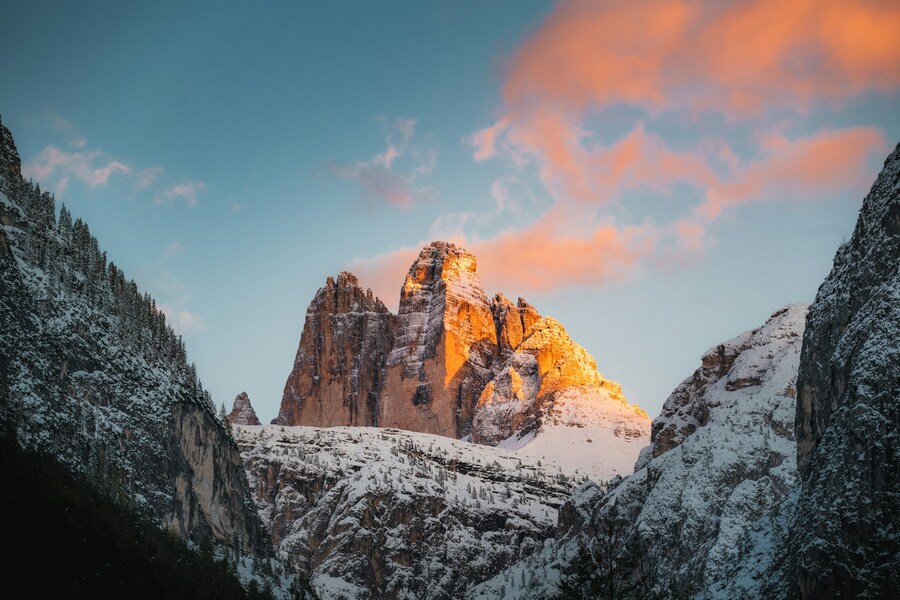
Source: Daniel Seßler/Unsplash
The Italian Alps offer a blend of legendary terrain, unparalleled gastronomy, and distinctly welcoming alpine culture. The experience is often segmented into two contrasting, yet equally compelling, regions: the unique, pale rock spires of the Dolomites in the East and the high, formidable peaks of the Aosta Valley in the West.
The Dolomites, or Dolomiti, are famous for their sheer, vertical, pale-pink cliffs – a UNESCO World Heritage landscape that provides arguably the most dramatic and photogenic backdrop for skiing in the world. The area is dominated by extensive ski-touring opportunities and the famous Sella Ronda circuit, but its true spirit is found in the deep winter touring off the beaten path, such as in the Fanes-Senes-Braies Natural Park. Here, the challenge lies in navigating the steep gullies and high plateaus, combining technical skill with the appreciation of the breathtaking geological formations. The region provides a network of high-mountain huts (rifugi) that transform ski touring into a multi-day culinary journey, offering gourmet Italian and Ladin cuisine in spectacularly isolated settings.
In contrast, the Aosta Valley, situated against the Swiss and French borders, is pure, high-alpine grandeur. Home to Courmayeur, Cervinia, and La Thuile, this region sits in the shadow of the giants: Mont Blanc (Monte Bianco), the Matterhorn (Cervino), and Monte Rosa. The off-piste skiing in the Aosta Valley is huge and consequential. Courmayeur, in particular, offers lift-accessed backcountry that rivals Chamonix, with the Skyway Monte Bianco providing staggering access to glaciated terrain and immense vertical descents. This area often captures excellent snow due to its positioning, allowing for superb conditions well into the spring. The Italian approach, however, favors long lunches, strong espresso, and an emphasis on the "dolce vita" ski lifestyle. The proximity of major hubs, such as Turin and Milan, makes travel relatively simple, ensuring this region is both accessible and immensely rewarding for those seeking a mix of challenging slopes and refined mountain living.
Conclusion
These 5 diverse global locations define the ultimate ski season, offering untamed snow from the Arctic to the Alps. They reward the journey with indelible experiences, whether you seek the solitude of Norway or the powder of Japan. Success requires not just technical skill but also meticulous planning. Embrace the challenge, redefine your winter adventure, and respect the power of the mountains. We wish you a fantastic journey!






